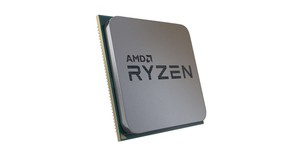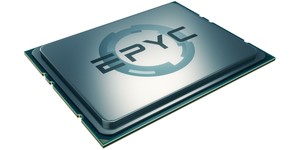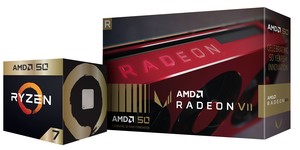
AMD has released the results for the first quarter of its 2019 financial year, and while its gross margin is beginning to improve its revenue has dropped 23 percent year-on-year - likely as prospective buyers hold their breath for next-generation CPU and GPU products.
During an earnings call late last night, AMD confirmed that its revenue for the first quarter of its 2019 financial year was $1.27 billion - down a whopping 23 percent year-on-year and 10 percent quarter-on-quarter, likely as customers hang fire on their purchases to see what the company's third-generation Zen 2-architecture Ryzen processors and Navi-based graphics processors have to offer. The company's gross margin, by contrast, proved the company is doing something right: While 41 percent is still considerably behind rival Intel, it's a five percentage point improvement year-on-year and three percentage points quarter-on-quarter. Increased operating expenses, sadly, saw its net income drop by $65 billion to just $16 billion from $81 billion in the same period last year.
'We delivered solid first quarter results with significant gross margin expansion as Ryzen and Epyc processor and data centre GPU revenue more than doubled year-over-year,' boasted Dr. Lisa Su, AMD president and chief executive, during the call. 'We look forward to the upcoming launches of our next-generation 7nm PC, gaming and data centre products which we expect to drive further market share gains and financial growth.'
Broken down segment-by-segment, the company's biggest loss came from its computing and graphics business which dropped 26 percent year-on-year and 16 percent quarter-on-quarter with shipment volumes for both CPU and GPU products falling. Average selling price (ASP) for both product types, though, increased year-on-year thanks to stronger sales of higher-end CPUs and data centre GPU products. The company's combined enterprise, embedded, and semi-custom segment, meanwhile, fell 17 percent year-on-year - a loss which would have been considerably worse if it weren't for a $60 million revenue boost from its licensing agreement with Tianjin Haiguang Advanced Technology Investment, Co., Ltd (THATIC) to build custom x86 products for the Chinese market.
The company's second quarter doesn't look much stronger, either: AMD's projections suggest a $1.52 billion revenue, plus or minus $50 million, which is a 19 percent improvement over its current quarter but another 13 percent decline year-on-year - driven, the company claims, by lower sales of graphics products into the channel, 'negligible blockchain-related GPU revenue', and lower semi-custom processor products revenue.
During the call, Dr. Su confirmed that the company's next-generation 7nm graphics processor, dubbed Navi, will launch in the third quarter - a key reason why its projections for the second quarter are so conservative - but that it will be priced below the company's current Radeon VII product range. While the company hasn't yet confirmed it, that suggests it will be focusing on the mid-range market at first - meaning Nvidia's dominance of the high-end desktop (HEDT) sector is likely to continue through to the end of the year.
While AMD's earnings sound a note of caution, investors appear upbeat about the company's long-term potential: Its share price spiked eight percent in after-market trading, settling to 5.61 percent above its closing price.

MSI MPG Velox 100R Chassis Review
October 14 2021 | 15:04








Want to comment? Please log in.